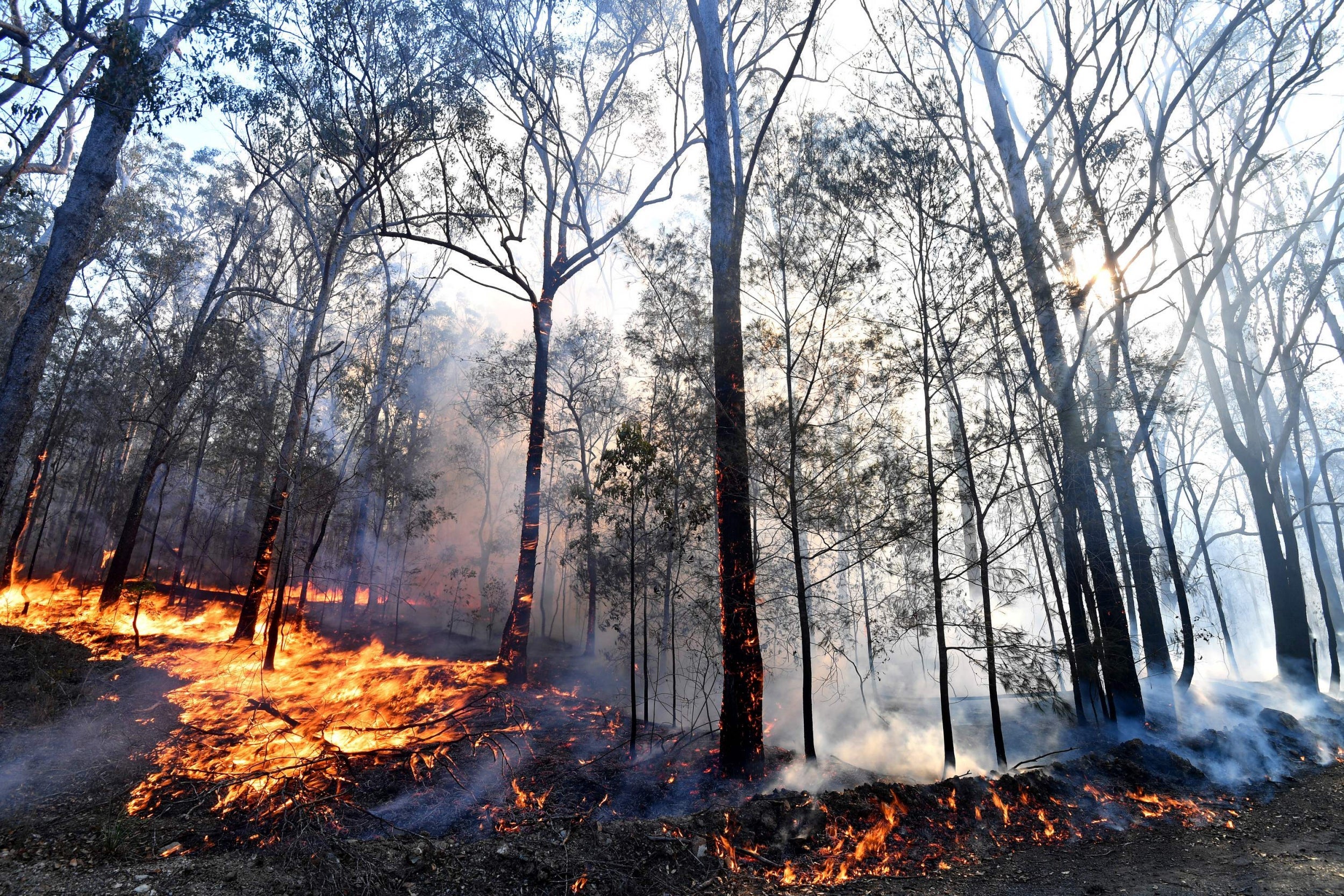Australian bushfire threatens koala colony after half wiped out
At least 350 dead out of 500 to 600, reports say

Your support helps us to tell the story
From reproductive rights to climate change to Big Tech, The Independent is on the ground when the story is developing. Whether it's investigating the financials of Elon Musk's pro-Trump PAC or producing our latest documentary, 'The A Word', which shines a light on the American women fighting for reproductive rights, we know how important it is to parse out the facts from the messaging.
At such a critical moment in US history, we need reporters on the ground. Your donation allows us to keep sending journalists to speak to both sides of the story.
The Independent is trusted by Americans across the entire political spectrum. And unlike many other quality news outlets, we choose not to lock Americans out of our reporting and analysis with paywalls. We believe quality journalism should be available to everyone, paid for by those who can afford it.
Your support makes all the difference.Bushfires have wiped out about half the koalas living on a coastal reserve in New South Wales, experts estimated on Friday, as a record number of intense fires rage around the Australian state.
A fierce early start to the bushfire season brought a blaze at the Lake Innes Nature Reserve that destroyed two-thirds of the koalas' habitat last month, leaving the rest under threat from one of 15 major blazes in the southeastern state.
About 350 koalas living on the reserve in the north coast town of Macquarie have died in the bushfires, the group Koala Conservation Australia estimates.
That compares with a total population of 500 to 600 in the reserve, said the group's president, Sue Ashton.
Animal carers at the Port Macquarie Koala Hospital nearby have been nursing rescued koalas, bandaging their wounds and feeding them eucalyptus leaves and formula.
"We look for signals of pain – teeth grinding, distress – and we just take it on a day-by-day basis," said Amanda Gordon, who leads the team of carers, adding that some of the koalas health problems can be hard to spot.
"Sometimes koalas seem to be doing really, really well. Their paws might be healing up but if something's going on that we can't see there's not really much we can do," added Ms Gordon, who has worked at the hospital for 15 years.
The carers estimate at least 10 days will be needed to assess the full damage to the koala population.

Population estimates for koalas, native to Australia, vary widely, from as few as 50,000 to little more than 100,000.
They dwell mostly in eucalypt forests in eastern states and on the coastal fringes, usually living up to 20 years, carrying their young in a pouch and sleeping for up to 18 hours a day.
Warmer weather brought by climate change threatens to worsen conditions for koalas, as deforestation has narrowed habitable areas, said James Tremain of the Nature Conservation Council of New South Wales.
"Devastating bushfires are going to knock out some of these key population centres, but so also will increasing temperatures," he said, by affecting the nutrition value of the leaves that are the animals' sole food source.
"Koalas are definitely in trouble in New South Wales, but if the declines continue at the same rate as the last 20 to 30 years, koalas could be extinct in the wild by mid-century," Mr Tremain added.
Reuters
Join our commenting forum
Join thought-provoking conversations, follow other Independent readers and see their replies
Comments